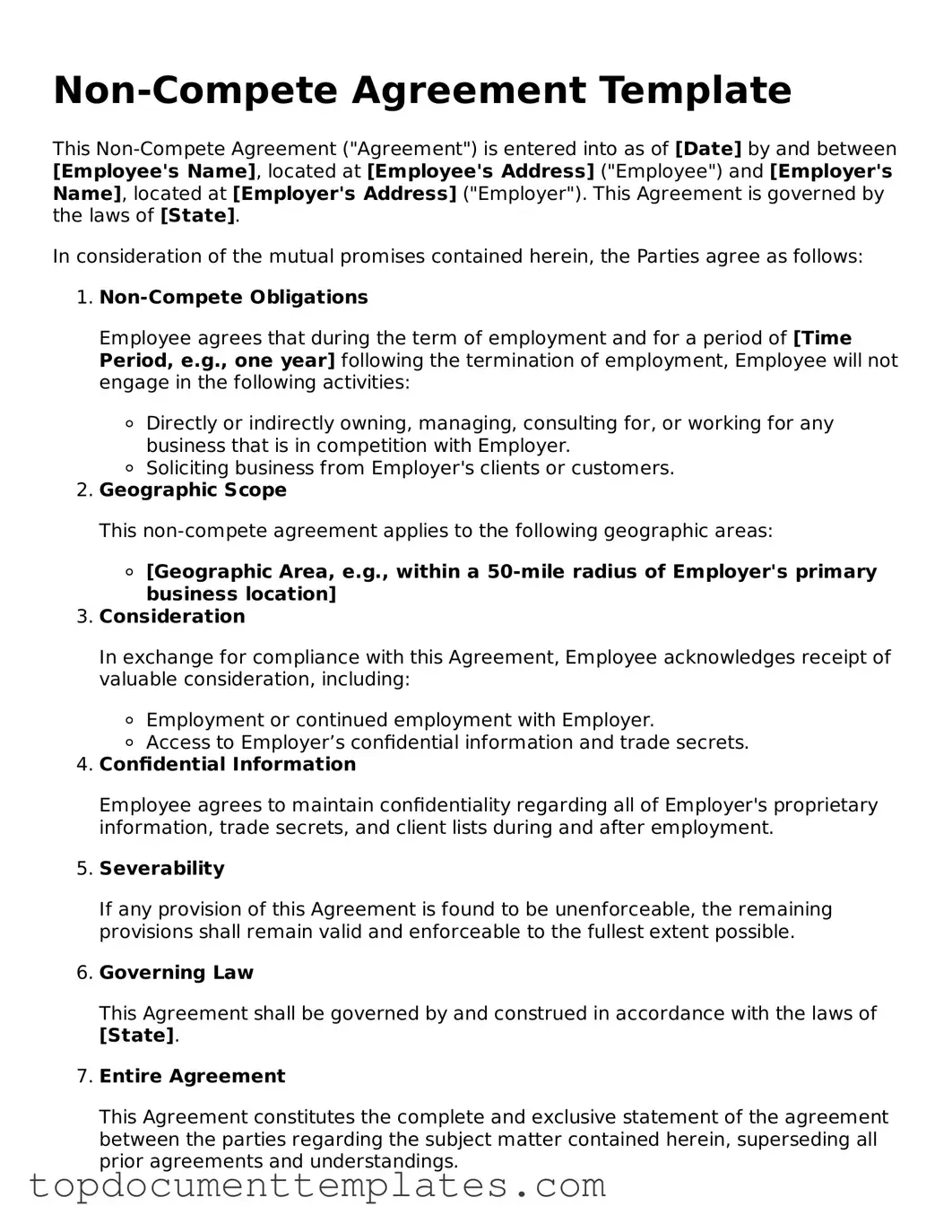Official Non-compete Agreement Template
A Non-compete Agreement is a legal contract that restricts an employee from entering into competition with their employer after the employment period ends. This agreement aims to protect the employer's business interests, trade secrets, and intellectual property. Understanding its implications is crucial for both employers and employees alike.
Ready to take the next step? Fill out the Non-compete Agreement form by clicking the button below.
Open This Form
